
Spring Framework logo by Pivotal Software is licensed under Apache License 2.0

Spring Framework logo by Pivotal Software is licensed under Apache License 2.0
Spring Data JPA provides a set of abstractions and high-level, repository-style interfaces that make it easier to work with Java Persistence API (JPA) for data access in Spring applications. It reduces boilerplate code.
I created a Spring Boot application using Spring Data JPA
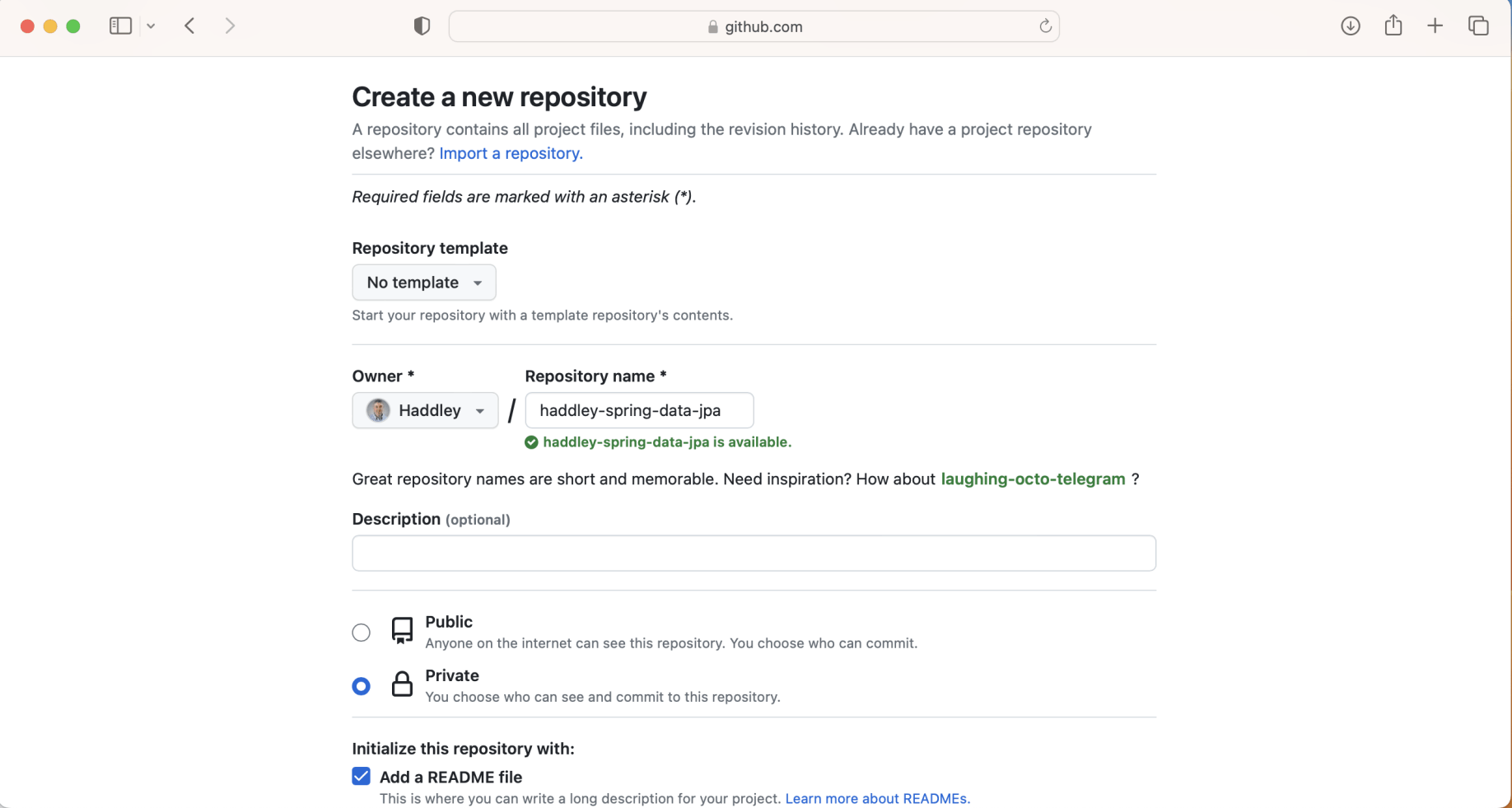
I created a new GitHub repository haddley-spring-data-jpa
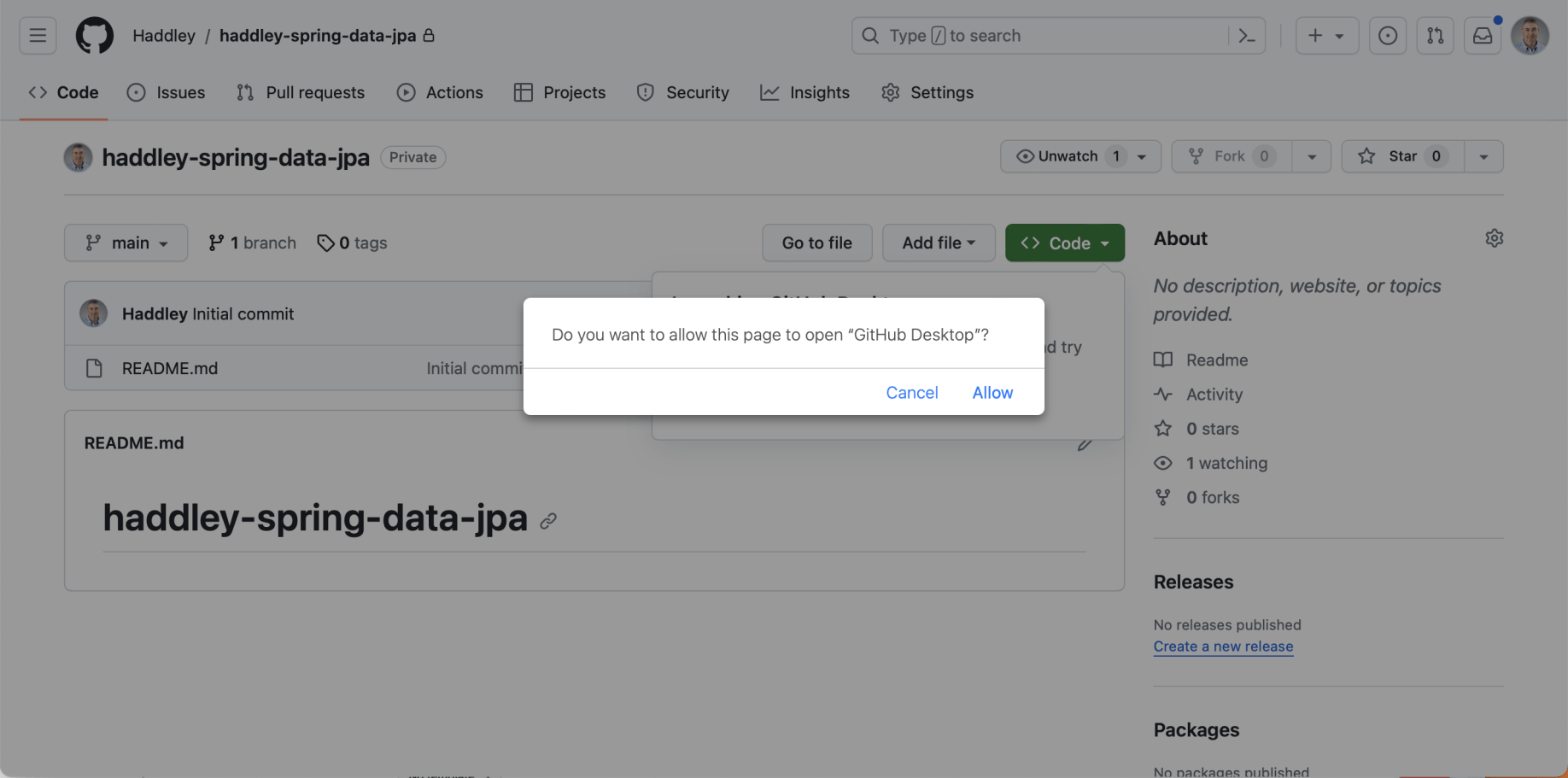
I opened the repository using GitHub Desktop
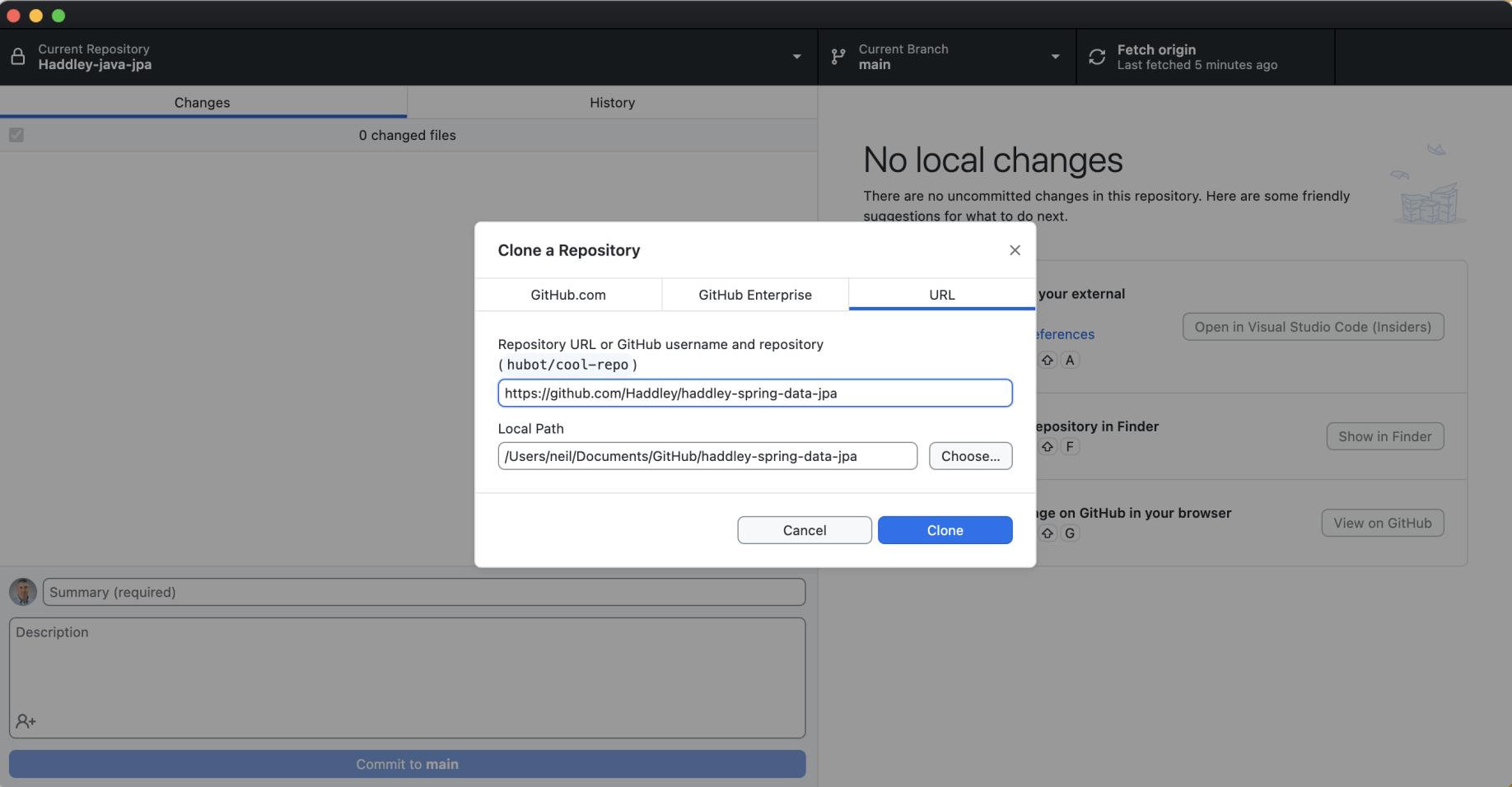
I cloned the GitHib repository
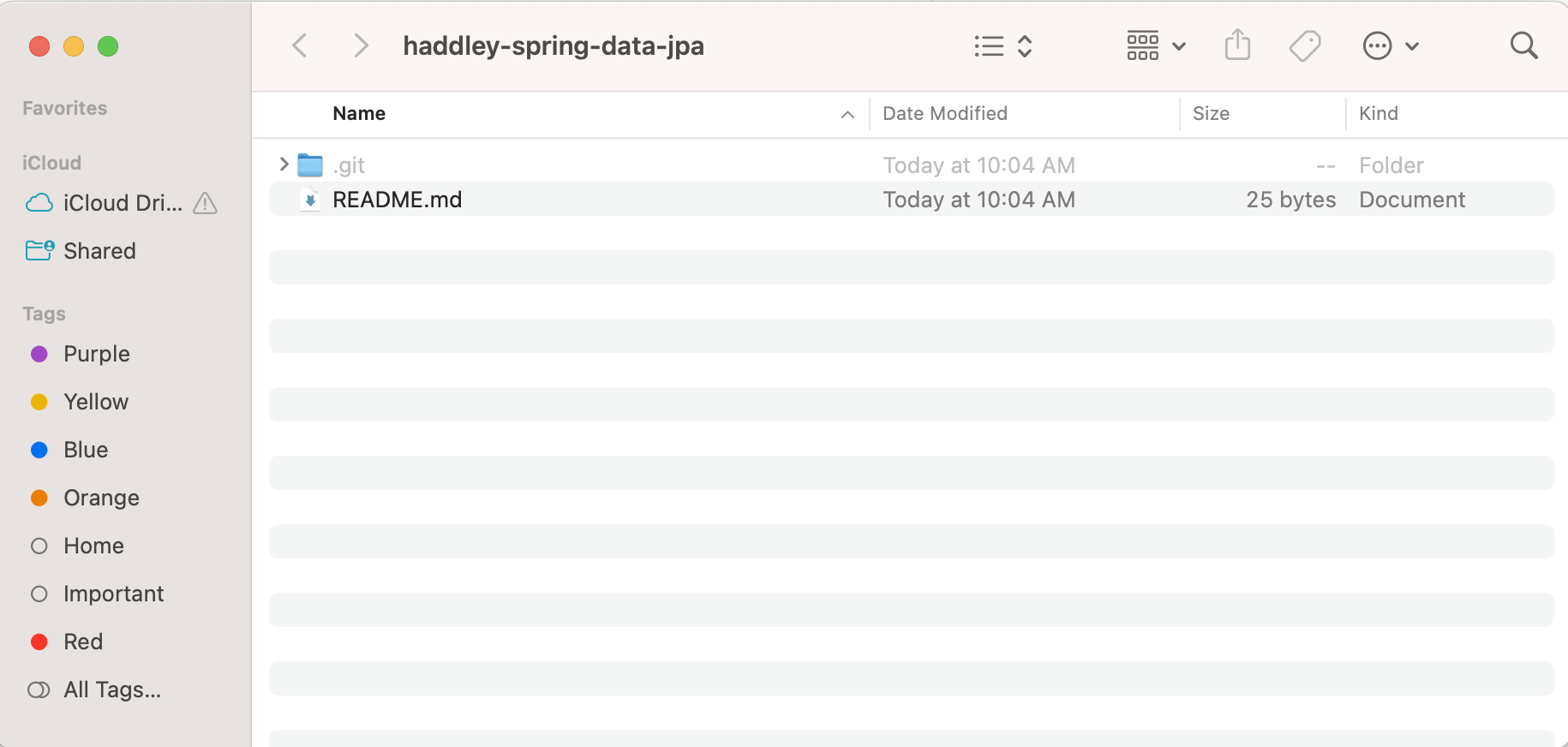
GitHub repository folder

I created a new spring boot application springdatajpa
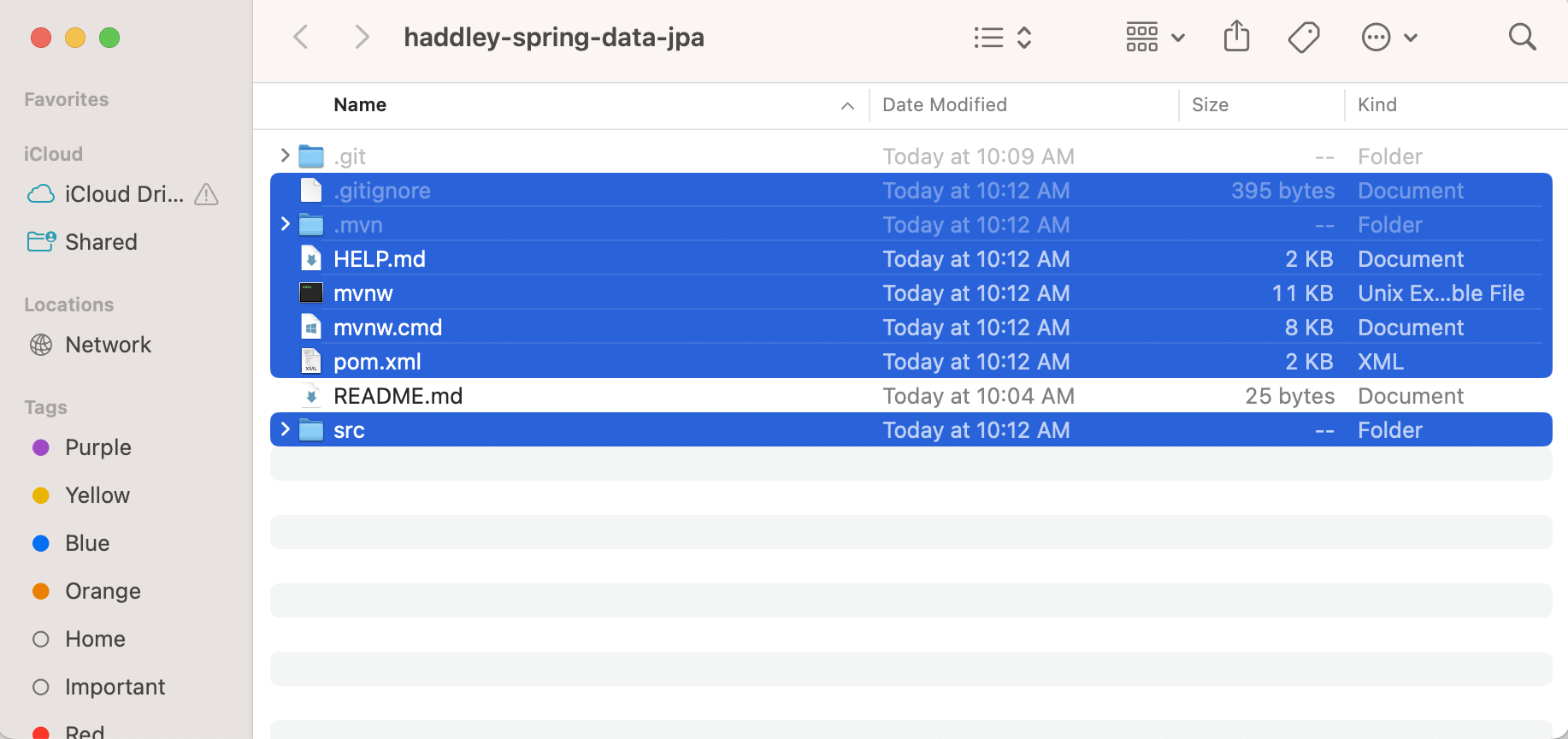
I copied the generated files to the GitHub repository folder
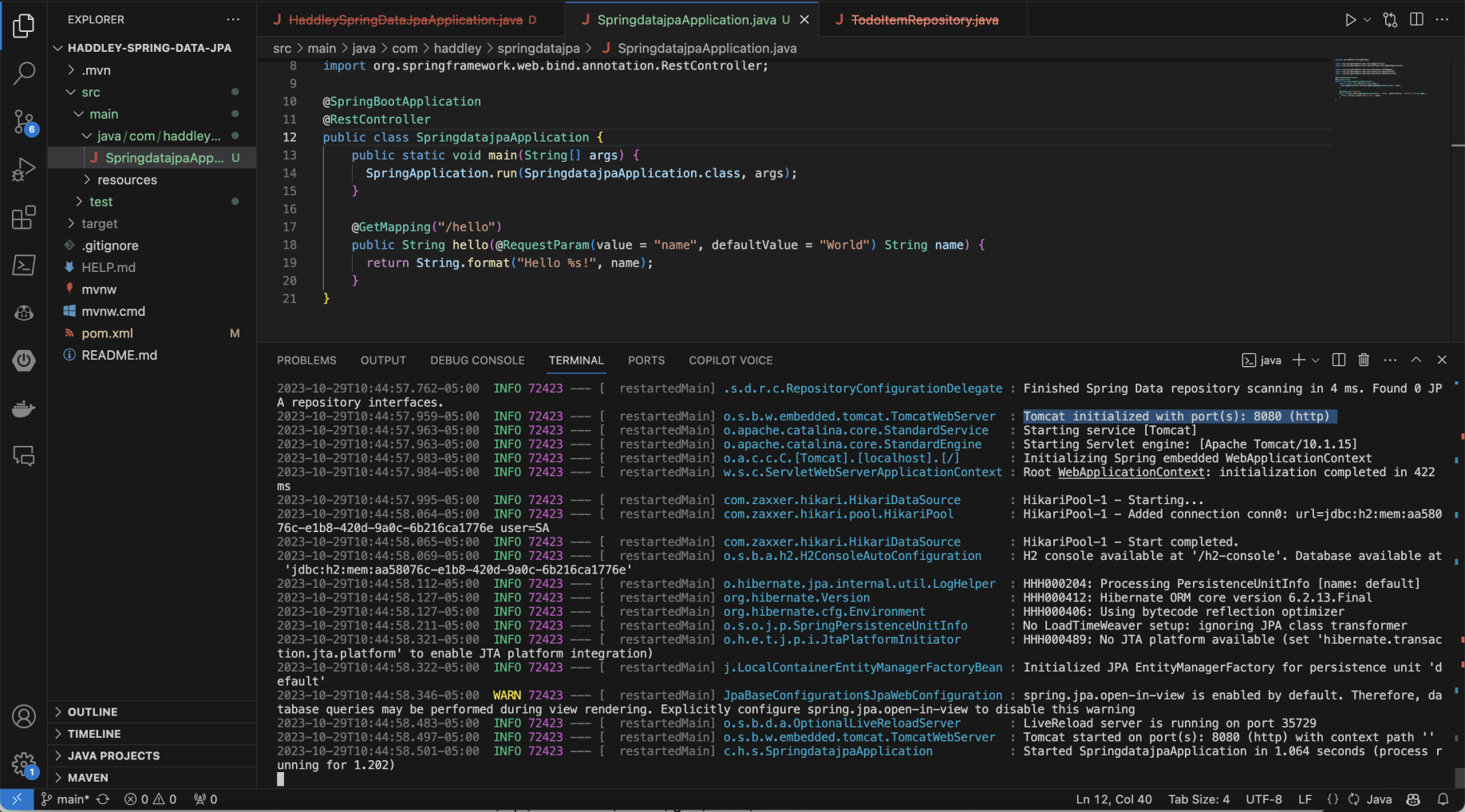
I updated SpringdatajpaApplication.java so that it would respond to http://localhost/hello requests
SpringdatajpaApplication.java

I accessed http://localhost/hello using my web browser
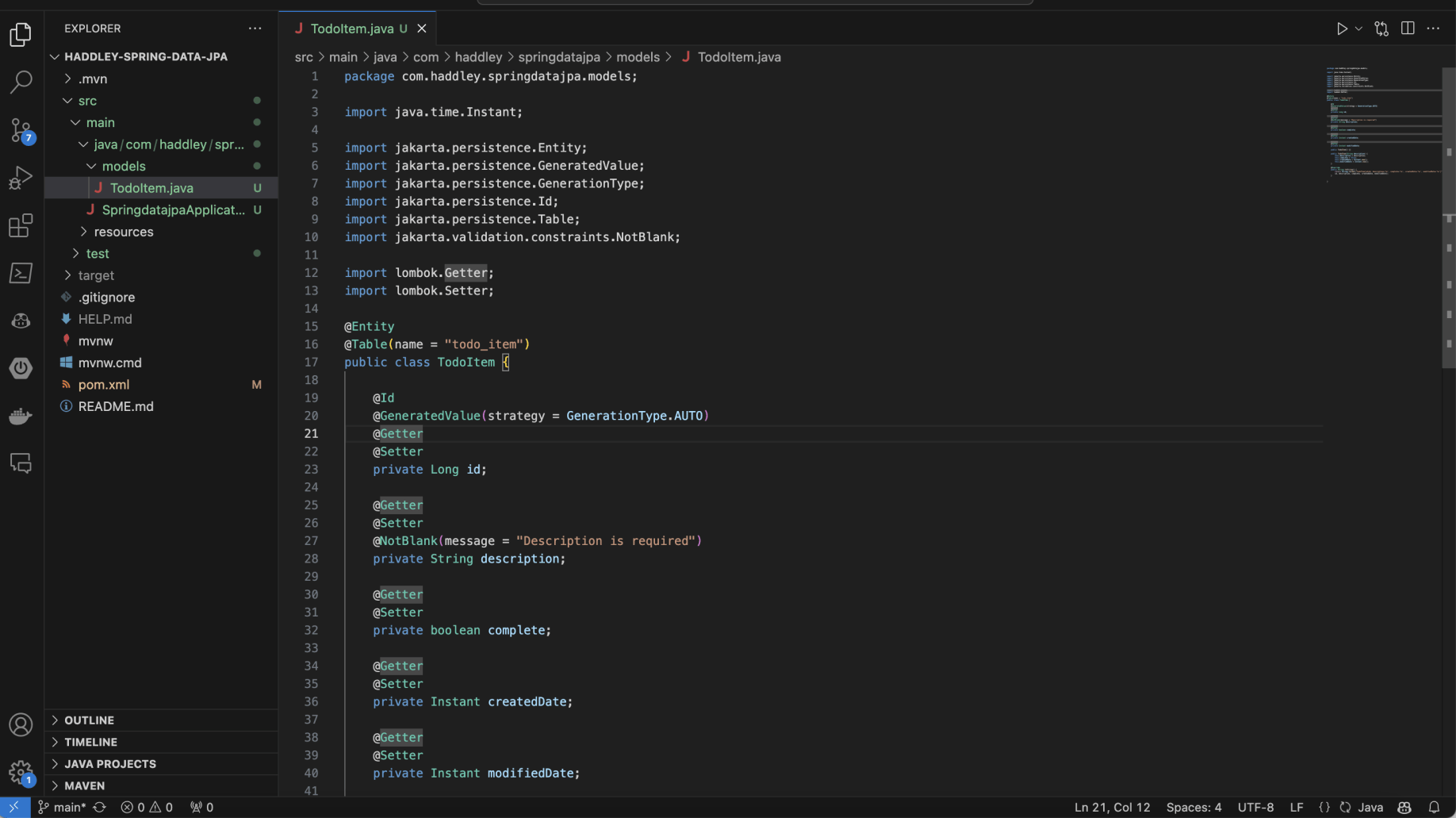
I created a TodoItem Java class
TodoItem.java

I created a Spring Data JPA repository interface (based on the TodoItem class)
TodoItemRepository.java
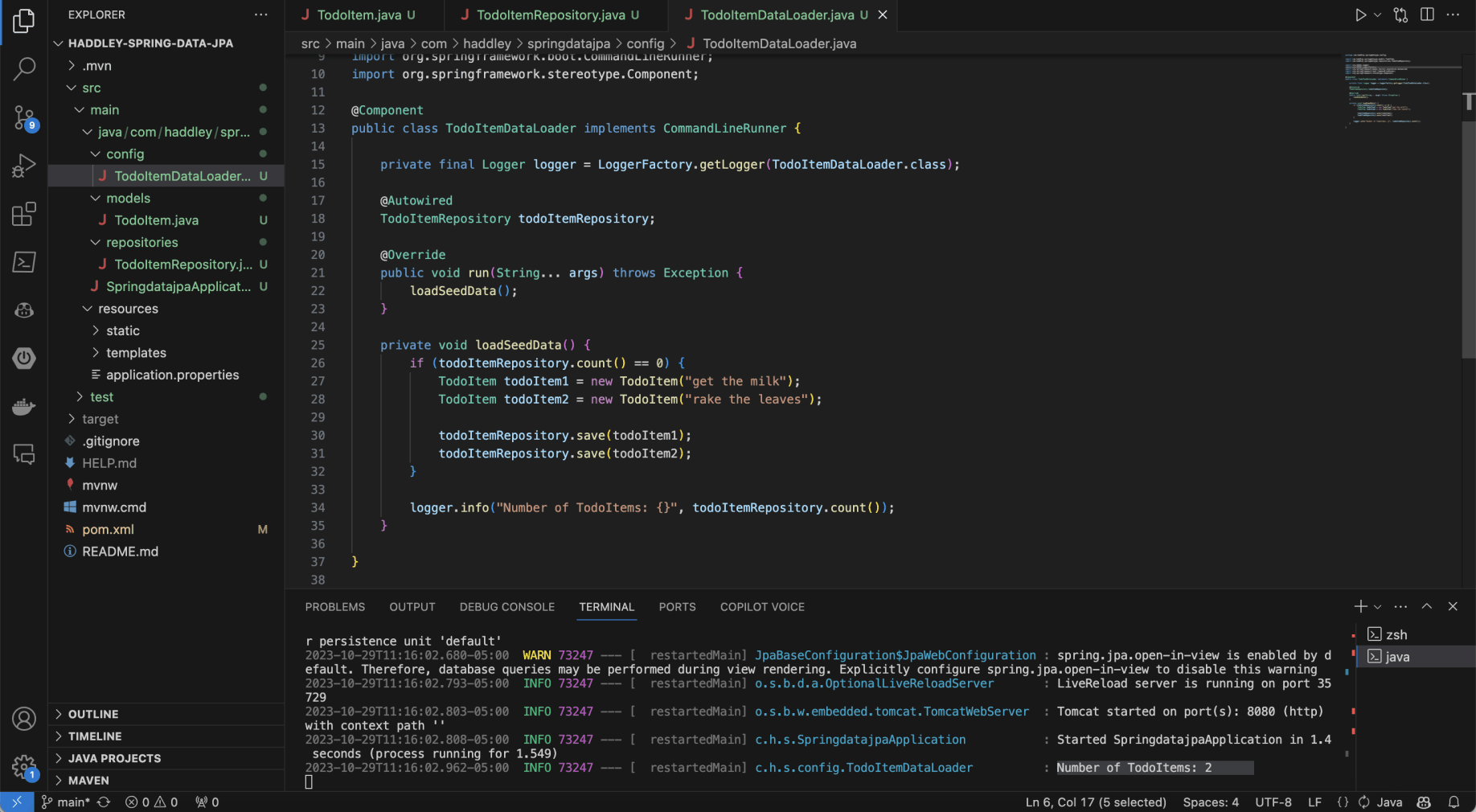
I created a TodoItemDataLoader to ensure that if the repository was empty two new TodoItems would be added as the application started
TodoItemDataLoader.java
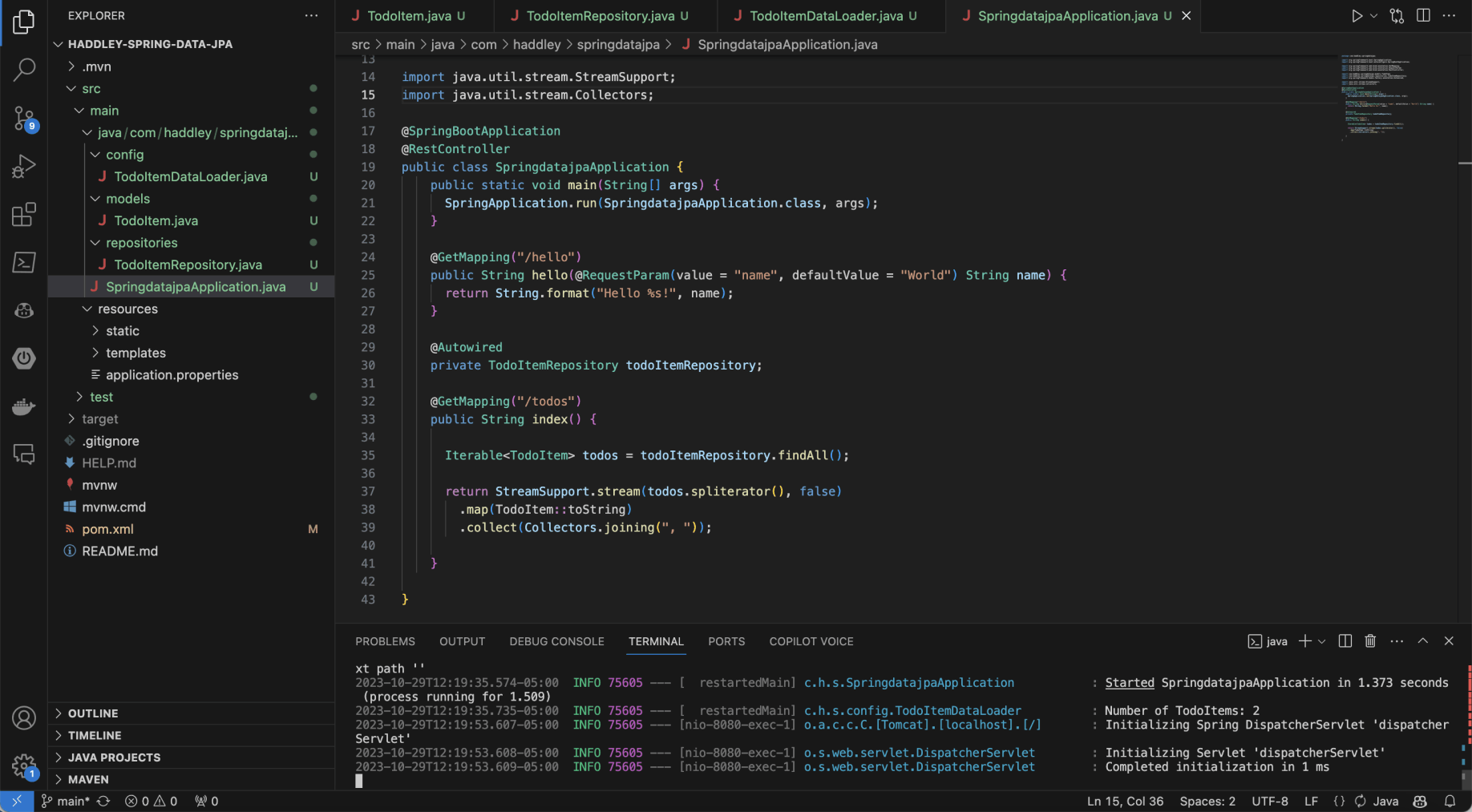
I updated SpringdatajpaApplication.java to return all of the TodoItems in response to http://localhost/hello requests
SpringdatajpaApplication.java (updated)

I accessed http://localhost/todos using my web browser

I added text to applications.properties
application.properties
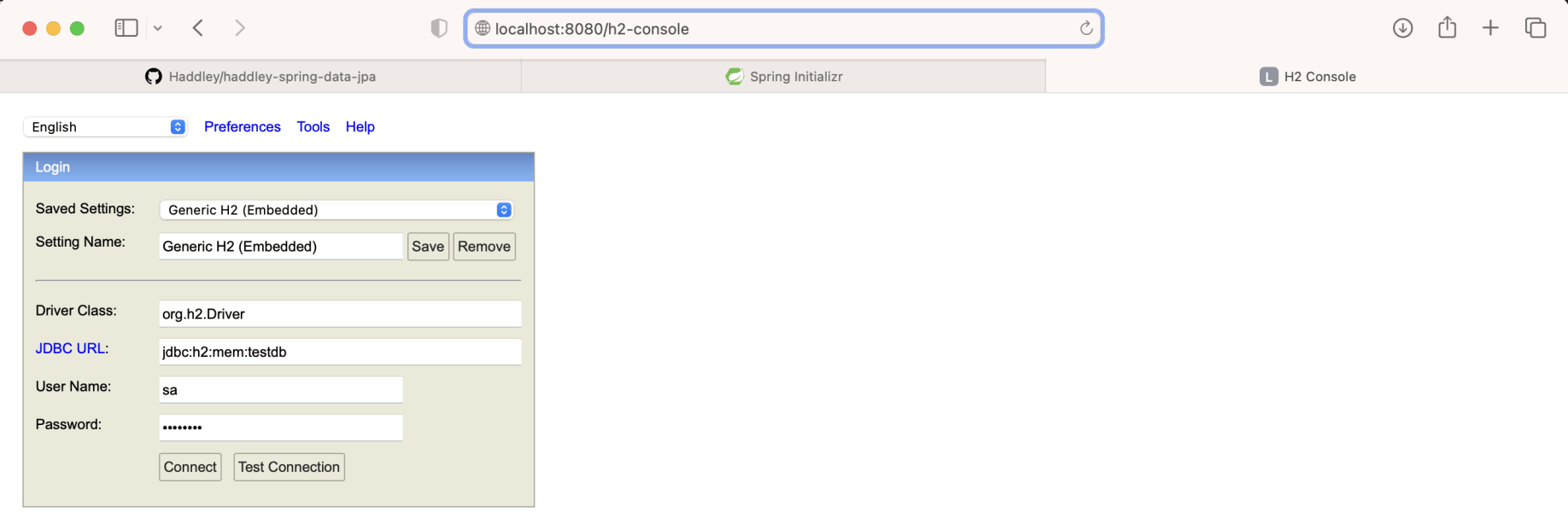
I accessed the h2 console (using values jdbc:h2:mem:testdb, sa and password)
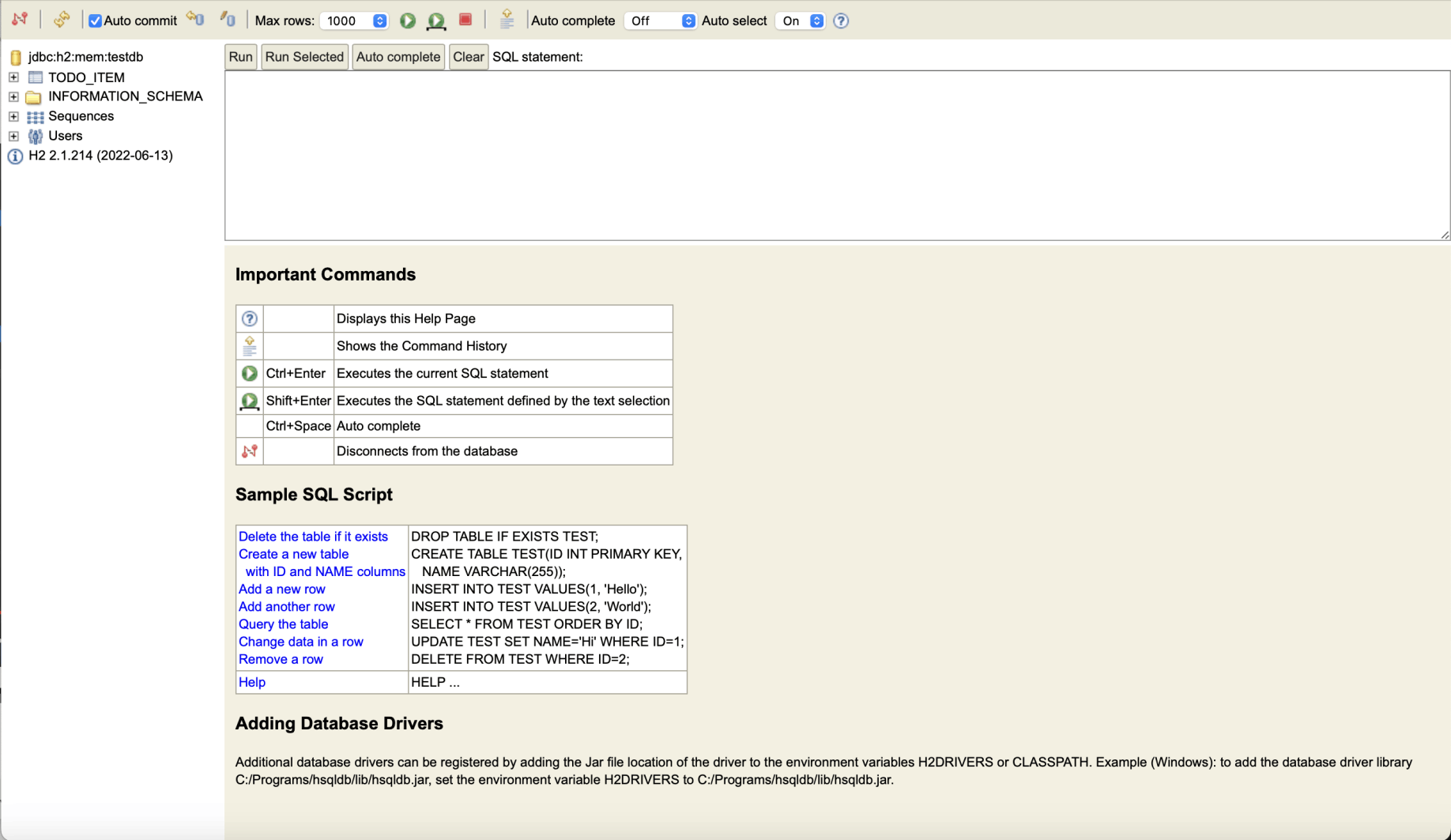
I clicked on the TODO_ITEM table

I clicked Run to execute the select query
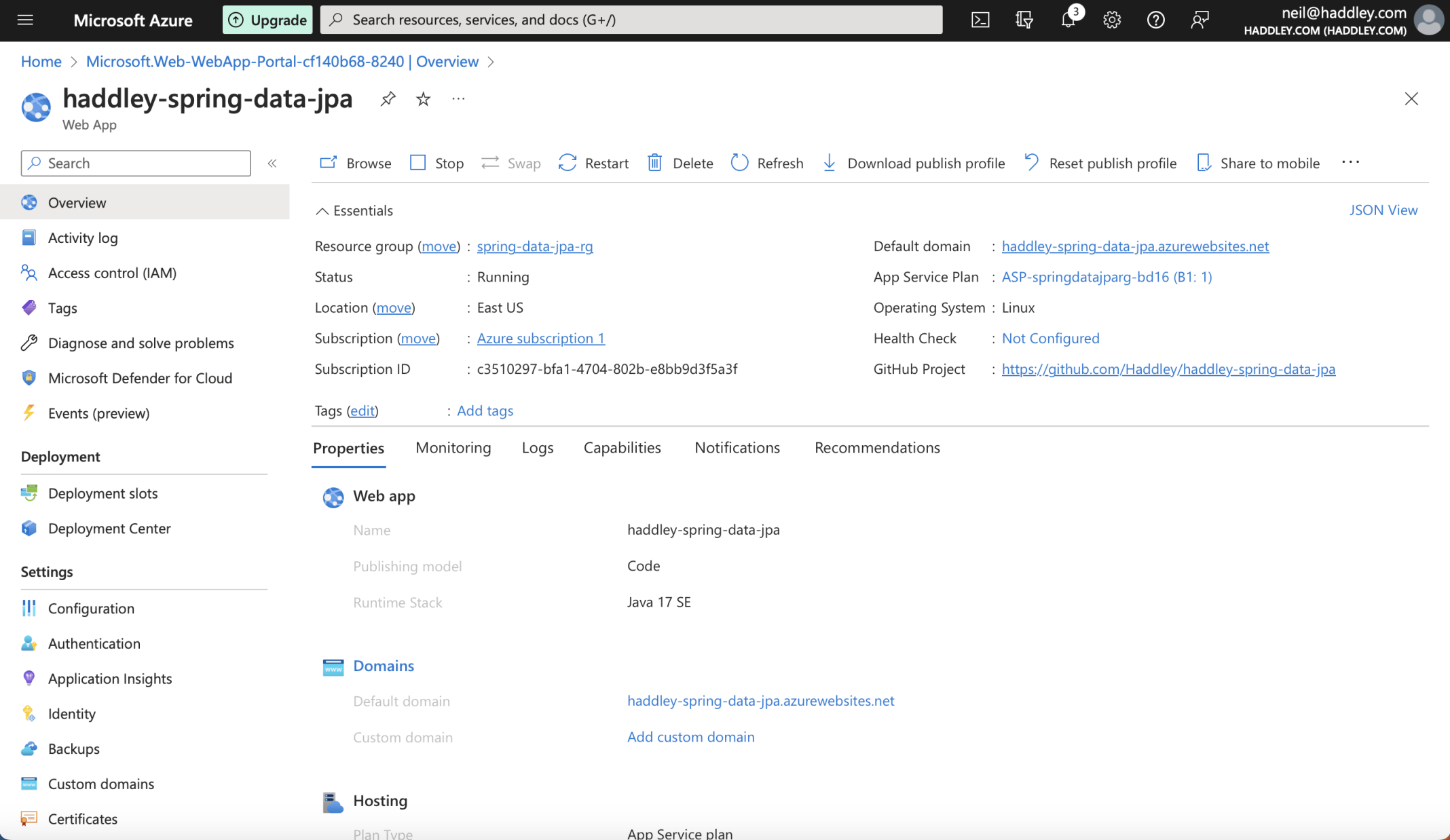
The haddley-spring-data-jpa application hosted in Azure

Accessing the haddley-spring-data-jpa application hosted in Azure